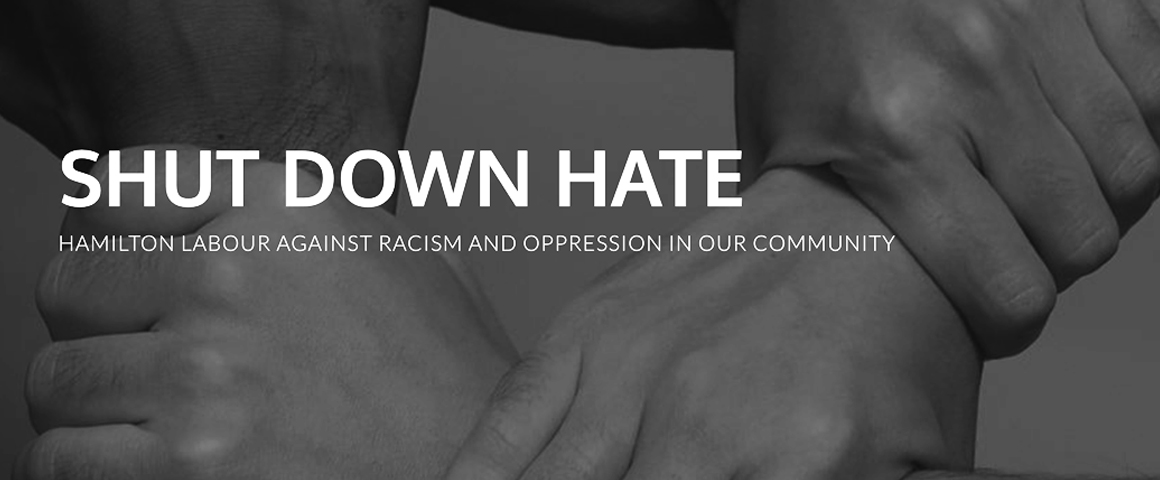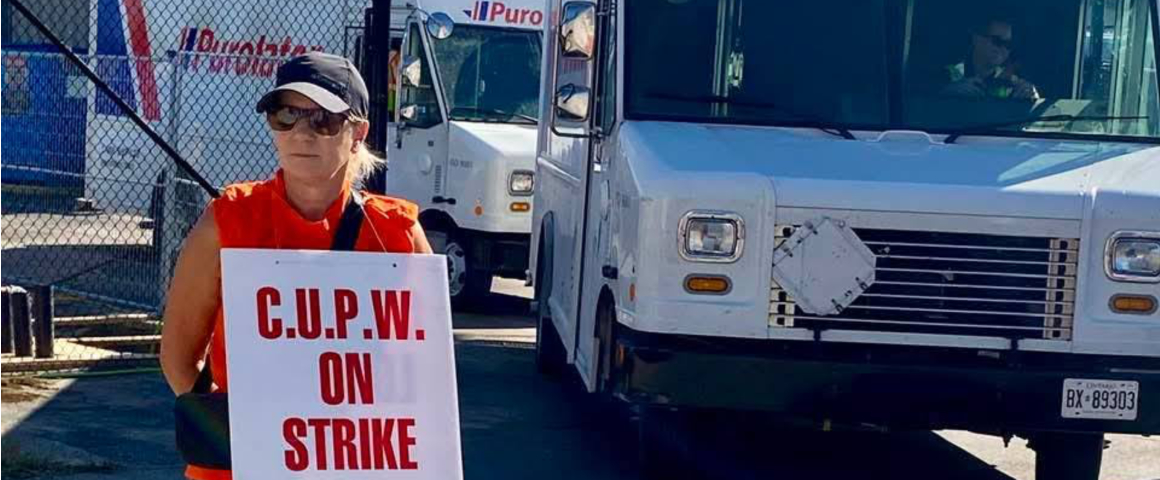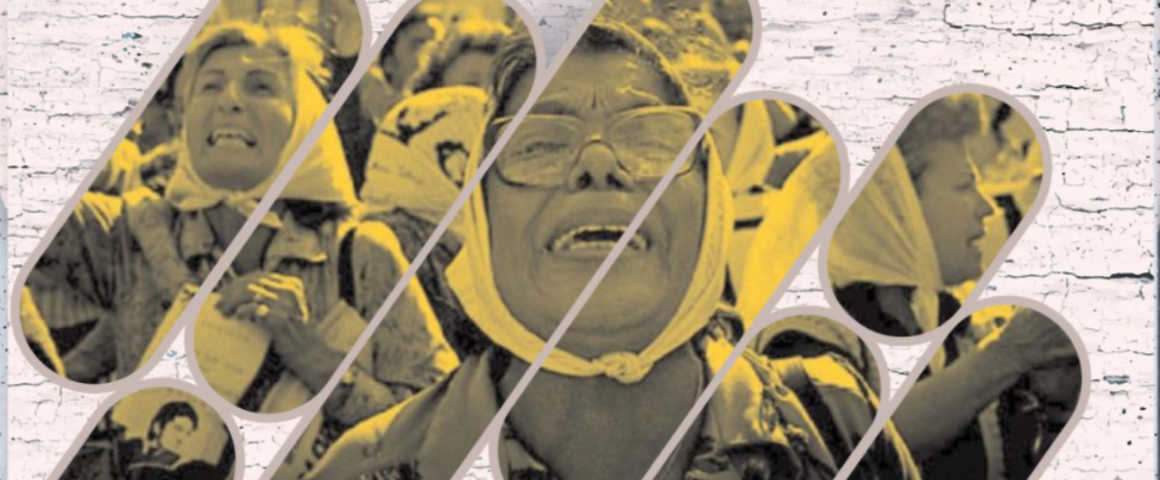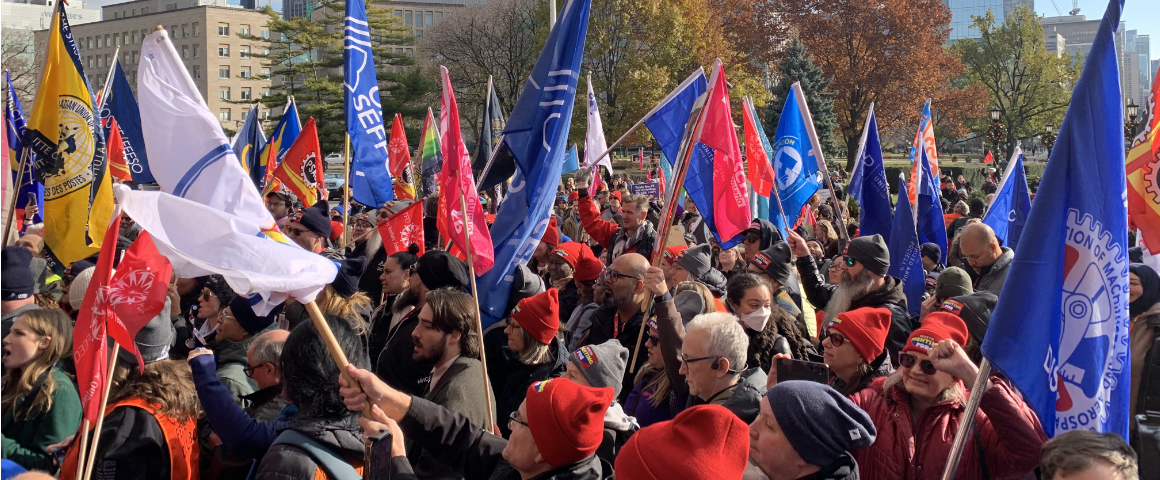As racist, Islamophobic, and fascist groups organize and campaign, the mobilization against them also continues to build. In many areas, the trade union movement is moving more deliberately into action, working to engage more members in the struggle against hate. I was curious about the approaches that labour is taking in different centres, and the ways these efforts might affect the political and tactical direction of local campaigns.
I started with the Hamilton and District Labour Council, which initiated Shut Down Hate, an ongoing and escalating effort to confront fascist and hate activity on both the immediate and systemic levels. To find out more about Shut Down Hate, I spoke with Anthony Marco, President of the HDLC.
Dave McKee: So, this campaign launched on September 30 [2017]. What can you tell me about the genesis of it?
Anthony Marco: It was a very speedy development. It goes back to a meeting in August, where we had a bunch of grassroots union members from across the city. Over the summer, there had been at least one incident of the “alt right” rallying, and there had been a call out for people to hold a counter rally but it was too late and too unknown. With no existing rapid response network here, the result was that the numbers for the right wing and the counter protest were about equal, which is a dangerous situation. There were a few trade unionists there, and we agreed that we needed to do a lot better. So, we had a meeting of about 25 activists – not just union people, but largely – and someone reported that there was going to be a racist rally on September 30, which coincides with the annual Ghandi Peace Festival at City Hall. We agreed that we needed to mobilize and organize against this.
The HDLC had decided back in April to get involved with the struggle against hate, so we were able to commit labour council support right away. But we also wanted to think a bit more broadly and not see this as a one-off thing. We decided to not think of our effort as just a counter rally – especially since the alt right announces and then cancels rallies all the time – but as our own mobilization around our own message. At the HDLC, we had been looking at documents and statements from other labour councils, and one of the phrases that jumped out was “shut down hate.” This kind of summed up our approach.
DM: It’s a slogan that points to the need for counter rallies, but that also takes us beyond that particular action.
AM: Exactly. So instead of focusing exclusively on a counter rally, we decided to do an announcement that we would launch this initiative on September 30. I hesitate to call it a campaign because this kind of work doesn’t have a starting or ending point – fighting racism and hate is ongoing – so I refer to it as an initiative. At the launch, we invited a lot of leaders from racialized communities to come and speak about how racism affects their specific community and why it is important for the labour movement to be involved. At the end of the day, the alt right did cancel their rally, but we were already well on the way to organizing our own event. We had speakers from the Canadian Labour Congress, the Muslim community, LGBTQ activists – as many different groups as we could – to speak about hate and the need to organize against it.
DM: You also had a proclamation and pledge that had a lot of union locals endorsing, right?
AM: Yes, at the time of the launch we had about 30 locals signing the pledge, and now are up over 50. They have signed on to the five pledge items, which require us to take action and shut down hate. We got unions in the building trades, in steel, in the public sector, in healthcare, and all over to sign this pledge. And it’s consistent with efforts in Toronto, London, and all over, where unions have also been working on this issue. Our plan is to broaden and also get community organizations to sign the pledge, and then take it to the institutional level. So, we are thinking of school boards, for example. We understand that every group who signs on – whether it is a community group, or labour, or an institution – is going to bring its own skill set and abilities. Is the school board going to put together a rapid response network to mobilize a counter rally? Probably not. But, is education required for this effort? Yes, in a huge way. So, since that first meeting in August we have had a few more and we have broadened the scope of what we are looking to achieve. It’s becoming more of a movement than an individual campaign, with room for a rapid response network, for labour education, for public education, and more. We have tried to avoid speaking of specific political parties, because the point is to build a movement that is focused on hateful ideas and policies, and to hold all parties to account.
DM: The tactics and methods you use are emerging as the movement builds and gets its own identity?
AM: One of the initial concerns that came up was around the issue of “Black Bloc” style actions, which can be problematic from an optics point of view. But we realized that Shut Down Hate doesn’t need to provide room for those kind of actions, because there are groups who will pursue those tactics anyway. It’s not that we would say we completely disagree with those tactics, but that we would not be asking our own members to do that. And that’s why we are committed to building a rapid response network, as well as the longer-term education piece. So, we’re working to produce an anti-racism and anti-oppression training package that we can roll out through union locals. Hopefully, we reach the point where this gets into workplaces, where you would have labour-led education of workers. Some of this education has to involve how we check our privilege – if we are white, male, cis, for example – and how we understand our silence or lack of action, in the face of racism or oppression, to be complicit. We have to get a lot of people to that point. From there, we move to the question of how to intervene effectively and safely, in different situations. But the longstanding part of the work, and the most difficult, involves the ongoing communication with racialized communities. Shut Down Hate, at its core, is about being an ally network that needs to help but not co-opt the struggle against hate. It is very easy for the labour movement to take over an initiative, especially since we have the money and resources to build an event or campaign fairly quickly. The communities who are affected by hate are diverse, so the labour movement needs to be able to actively support both that diversity of experience and the response to it. To do this, we need ongoing communication and engagement with different communities, and we need to be always asking them how we can best be involved. We also need to always be confronting racism and oppression within our own movement.
DM: To that last point, there is often a disconnect between the union leadership and the grassroots. In my own experience, it was common to have the union leadership undergo a process of education on various economic or social issues, but for the membership to be left out of that process. Of course, this is a generalization and it can also happen in the other direction, but the challenge is how to bridge that disconnect.
AM: Well, Shut Down Hate started as a grassroots initiative so some of that gap has already been bridged. But when we reach out with anti-racism and anti-oppression training, we will be working with union affiliates but in all likelihood, we are going to get the same people who already engaged on these issues. They will probably learn something, but they probably aren’t the group we need to be reaching. This is partly why we are trying to involve institutions as well as unions and community groups. Some of the biggest employers in Hamilton right now are McMaster University, the city, and the school boards. Because they are public sector, and unionized, it may be easier to get them to become more concrete around their obligation to provide a safe and non-discriminatory workplace. This provides another avenue to engage workers in education and action against racism and oppression. Another way to bridge that disconnect is through community-based activism. I’m old enough to remember the Block Parent signs that people used to place in their homes, and how this got people thinking and talking more about community safety. Something as simple as an anti-hate window sign could be very effective for placing the issue right in our communities, which include a lot of union members. This isn’t necessarily something that Shut Down Hate will be doing, but it’s an example of how we can reach out to the grassroots.
DM: We know that certain unions have a stronger tradition of political and social activism than others. As well, certain unions and sectors have a more diverse membership than others. Has this had an impact on how you engage different affiliates?
AM: We aren’t at that point yet. We have many union locals that have signed on, with varying levels of activity on these issues. Some sectors are more diverse than others – some have a majority of women and some have very few women, some are mostly white workers while others have a majority of racialized workers. But it’s important to note that, despite this, unions from all of these sectors have signed on to Shut Down Hate, because they understand that this matters to them as well. As we move along, we may need to customize some of the training so that we have a strongly unified “boots on the ground” presence. The line that has resonated with most of our members, who are usually union activists, is “Not in our workplace – not is our community.” We wouldn’t accept hate in our workplace, and we would stand up to it there, so we need to take the same approach in our community.
DM: When we look at oppression we identify a number of specific types including Islamophobia, anti-Black racism, anti-Indigenous racism, misogyny, ableism, homophobia and transphobia. Have you found that huge breadth to be readily apparent to people?
AM: That’s why oppression has become such a powerful word. Ten years ago, we didn’t use that word in this way. Even though we deal with oppression in its acute forms, most of us know that at its heart, it is a class issue, plain and simple. What’s happening in the US right now, with this re-buildup of racism, is directly tied to the fact that there is a poverty class and a working poor class, which is bigger than it’s ever been, and there is a huge divide between the upper class and the working class. That fosters a situation in which people look for someone to blame, and the easiest person to blame is the one who doesn’t look like you. That’s why the union movement is so powerful in this struggle – we may not know everything there is to know about racism or sexism or other oppressions, but we do know about the issue of class. Unions are under pressure to look more inwardly – to concentrate on this particular contract or grievance. But we have a strong tradition of looking beyond unionized workers, to the working class as a whole, and this is the role of the labour council. We are a point at which trade unions connect with the community as a whole, being issues and experiences together, and forge strong networks for social change.
(For more information about HDLC’s Shut Down Hate initiative, visit shutdownhate.ca)




